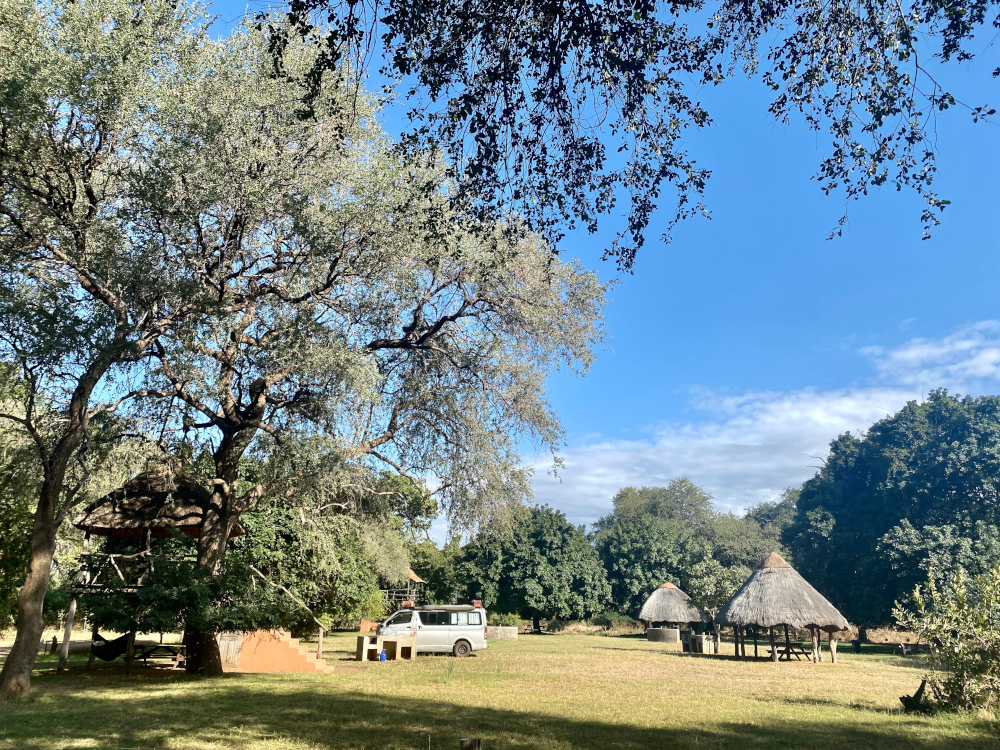South Luangwa National Park is famous for its untamed atmosphere. But did you know it’s a top destination for wild dogs? Photographer Peter Geraerdts shares an update on the painted dogs.
South Luangwa National Park could be called the Valley of the Wild Dogs. In 2018, the Zambian Carnivore Programme announced that the Luangwa Valley is home to the country’s largest wild dog population. When I started guiding for Track and Trail River Camp in 2010, I didn’t witness nearly as many sightings. But the period from 2017 up to now has seen a noticeable increase.
From our camp just across the Luangwa River from the park, I lead regular game drives into this pristine environment. I have fallen in love with the beautiful landscape and its ebony groves, mopani woodlands and leadwood forests. The Luangwa River, which we often admire from the camp’s elevated pool, is the lifeblood of this ecosystem. It draws high concentrations of game, particularly during winter and spring. And where the game go, so do the predators.


In fact, it’s been an action-packed season as far as wild dogs are concerned. A pack of 20 wild dogs shows up regularly in the open areas of Mfuwe towards Chichele Hill. It’s such a pleasure to see these dogs do what they do best, completely oblivious to the spectators.
Wild dogs are extremely efficient hunters with a success rate of about 75%. The female puku in the photograph falls in the 25% that got away. She was too quick and too smart for the dogs. She even leapt over the attacking dogs a couple of times to get away.

Recent wild dog sightings
Winter is denning time for the dogs and most pregnant females have settled in at a burrow. The Alpha female can give birth to over a dozen pups at a time. One caretaker always stays behind with the pregnant female while the other pack members hunt and bring back food to the burrow.
We find that pack formations change every year. Some packs are joined by members from other packs, even crossing the Luangwa River to join a new pack in another territory.

Hyenas and wild dogs are not the best of friends, to put it mildly. First of all, hyenas can be a threat to the young pups. Secondly, hyenas are the ‘pirates of the bush’, always ready to steal a kill from other predators. But if the hyenas are outnumbered, they risk a painful nip or two. The dogs are quick to snap away when a hyena is trying to escape. In the past couple of weeks, we’ve had a few of these hyena vs wild dog sightings.

How to prepare for a wild dog encounter
Lots of travellers no longer bother bringing fancy cameras and heavy equipment on their holidays. Nowadays smartphones can get good results if your subject is not too far away from the vehicle. What does make a difference is catching that specific moment in the right light. Wild dogs are mostly active in the early mornings and late afternoons as this is when they hunt. Fortunately, this is the same time when the light is most interesting for pictures.

The best chance of catching wild dogs on a hunt is to ‘Track and Trail’ them. Locate them during the day while they are resting. Stay with the pack and look for signs that they are getting ready to hunt. The dogs will begin with stretching their muscles and grooming. After a quick shuffle here and there to relieve themselves, it is game on.
At this point, make sure your camera settings are right, particularly for action shots. Dogs are fast and antelope in flight even faster. Blurry dogs can be an obvious result if the camera settings are overlooked.

When it’s hot, the dogs hunt at dusk from 17:30 till 18:00 (September till January). During the colder months of the year, from May till September, they can start hunting a bit earlier, from 16:30 onwards. When the moon is out, they can continue hunting into the night.
Travel tips
Driving from Lusaka to Mfuwe via Chipata takes around 9-10 hours. The road conditions have improved considerably over the past few years. These days overlanders can travel along a tarred road all the way, bar some potholes here and there.
Although Track and Trail River Camp offers luxurious en-suite accommodation like many other South Luangwa Lodges, we also have camping. The campsite has BBQ stands and electricity, as well as ample ablution facilities. What’s more, campers can use the bar/restaurant, bush gym and elevated pool.


The roads within South Luangwa National Park are fairly good once graded by the wildlife authorities. This is mostly done by the end of May. Note that you require a 4×4 vehicle to cross sandy riverbeds.
For more sightings from South Luangwa National Park, follow @petergeraerdts on Instagram.

